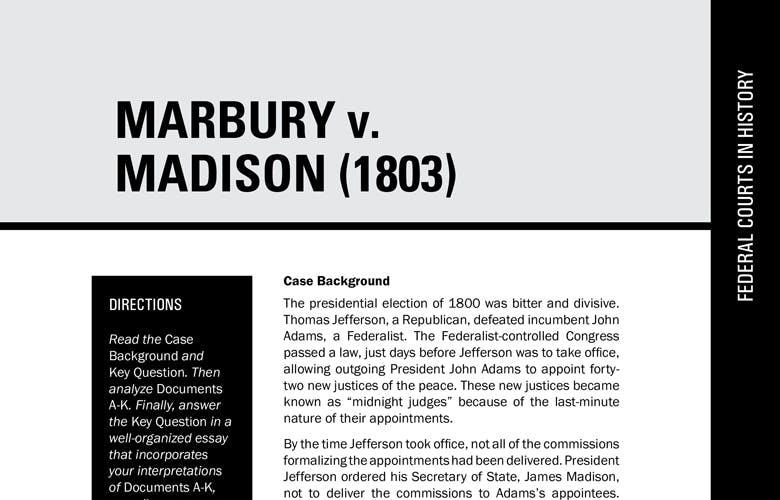Marbury v. Madison – Case Background
DIRECTIONS
Read the Case Background and Key Question. Then analyze Documents A-K. Finally, answer the Key Question in a well-organized essay that incorporates your interpretations of Documents A-K, as well as your own knowledge of history.
Case Background
The presidential election of 1800 was bitter and divisive. Thomas Jefferson, a Republican, defeated incumbent John Adams, a Federalist. The Federalist-controlled Congress passed a law, just days before Jefferson was to take office, allowing outgoing President John Adams to appoint fortytwo new justices of the peace. These new justices became known as “midnight judges” because of the last-minute nature of their appointments.
By the time Jefferson took office, not all of the commissions formalizing the appointments had been delivered. President Jefferson ordered his Secretary of State, James Madison, not to deliver the commissions to Adams’s appointees. One of those commissions not delivered was for William Marbury. Marbury asked the Supreme Court to issue a “writ of mandamus” – a court order forcing Jefferson and Madison to deliver the commissions. The Judiciary Act, passed by Congress in 1789, had given the Supreme Court the power to issue these writs.
Sitting as Supreme Court Chief Justice was John Marshall, a Federalist, and the cousin of Thomas Jefferson. In his landmark opinion, Marshall asserted that Marbury had a right to his commission, but that the Supreme Court lacked the power under Article III of the Constitution to force the President to deliver it. In so ruling, the Supreme Court overturned the portion of the 1789 Judiciary Act granting the Supreme Court the power to issue writs of mandamus. The Supreme Court had found an act of Congress unconstitutional, and judicial review was first exercised.
